The man who made 'the worst video game in history'
- Published
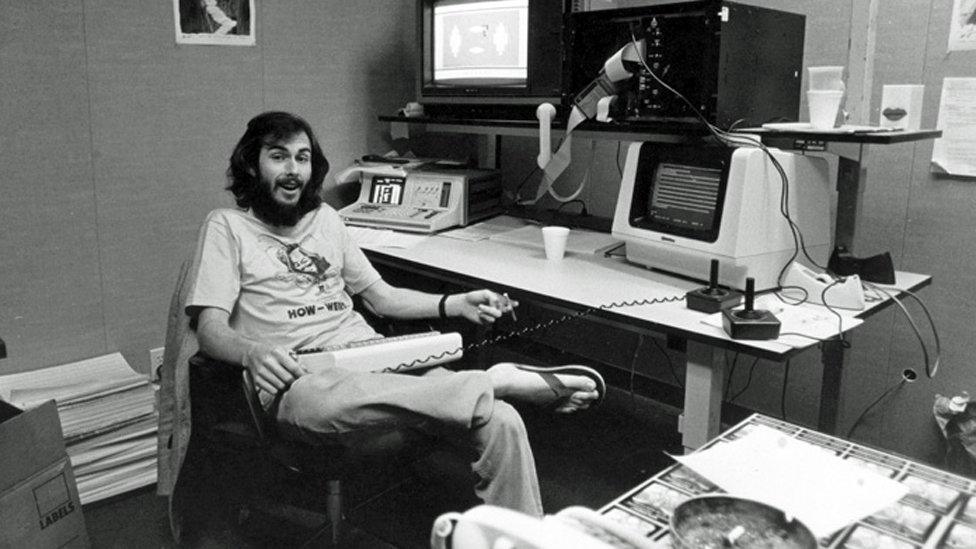
The video game of Steven Spielberg's ET is considered to be one of the worst of all time and has even been blamed for triggering the collapse of Atari. Howard Scott Warshaw, the gifted programmer who made it, explains how it was rushed out in a matter of weeks - and how he feels about those events in California now.
Spielberg was unimpressed.
"Couldn't you do something more like Pac-Man?" he asked.
It was July 1982 and Atari, then one of the world's most successful tech companies, had just paid a reported $21m for the video game rights to Spielberg's new blockbuster, ET the Extra-Terrestrial.
Howard Scott Warshaw was the programmer tasked with designing the game.
"I was stunned," says Warshaw. "Here was Steven Spielberg, one of my idols, suggesting that I knock off the game! My impulse was to go, 'Well, gee, Steven, couldn't you make something more like The Day The Earth Stood Still?'"

Warshaw's stock was high at Atari. The 24-year-old had just finished the video game of Spielberg's Raiders of the Lost Ark. Spielberg considered Warshaw a "certifiable genius" and 36 hours earlier Warshaw had been hand-picked for their next collaboration.
"It was a day that will live in infamy in my life forever," says Warshaw. "I was sitting in my office and I get a call from the Atari CEO. He said, 'Howard, we need the ET video game done. Can you do it?'
"And I said, 'Absolutely, yes I can!'"
Games for the Atari 2600 were distributed on cartridges that took weeks to manufacture. If ET was to be in the shops for Christmas, Warshaw had a tight deadline.
"The CEO goes, 'We need it for 1 September.' That left five weeks to do it! Normally it'd be six to eight months to do a game, not five weeks.
"Then he said, 'Design the game and on Thursday morning, be at the airport and there will be a Learjet waiting to take you to see Spielberg.'
"I'm not sure exactly what I was full of but whatever it was, I was overflowing with it."
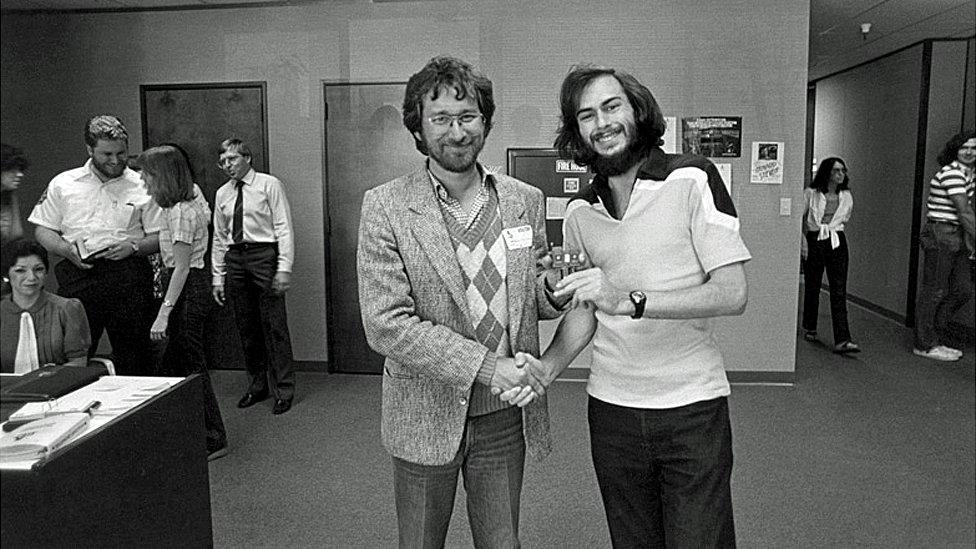
Warshaw drew up his pitch to Spielberg, and travelled from the Atari headquarters in Sunnyvale, California to Los Angeles. His idea was an adventure game in which the player had to help ET phone home by collecting components to make an inter-planetary telephone. The player would have to dodge government agents and scientists in order to complete the mission.
"I got down to Spielberg and I laid out the whole design," he says. "I told him, 'I think it's really important that we do something innovative. ET is a breakthrough movie and I think we need a breakthrough game.'
"I talked him out of the idea of a Pac-Man knock-off. But the key was to design a game that I could deliver in five weeks."
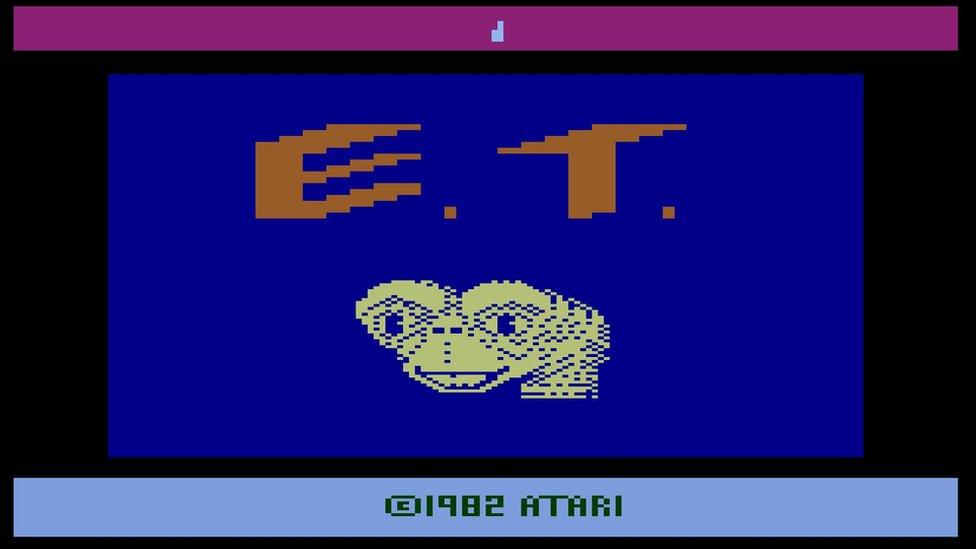
Atari needed ET to be a hit. In 1982 sales had reached a peak of $2bn but the company was losing market share to home computers like the Commodore 64, which could do more than play games.
"It was the hardest I've ever worked on anything in my life," says Warshaw, who was the game's sole programmer. "I started working at the office but after a while I realised there was a problem; I still have to go home to sleep and eat occasionally.
"So we had another development system installed in my house so that I would never be more than two minutes away from working on the code except when I was driving.
"There was a manager who was assigned to make sure I was eating so that I'd be able to keep going.
"When it came to the end of the process, my reaction was, 'Wow, I did it!'"

Atari ordered an initial run of four million copies and budgeted a reported $5m on what would be, at the time, the biggest-ever advertising campaign for a video game.
"ET needs help from his human friend - and that's you!" read the magazine ad. Television commercials ran for weeks. Spielberg himself appeared in a promotional video, whilst Warshaw was flown to the London premiere of ET and given a seat in front of the Princess of Wales.
"The bosses believed that as long as we put anything out the door with ET's name on it would sell millions and millions," he says.
To begin with, the game was "right up there on the Billboard top sellers" but word began to spread that there were serious problems.
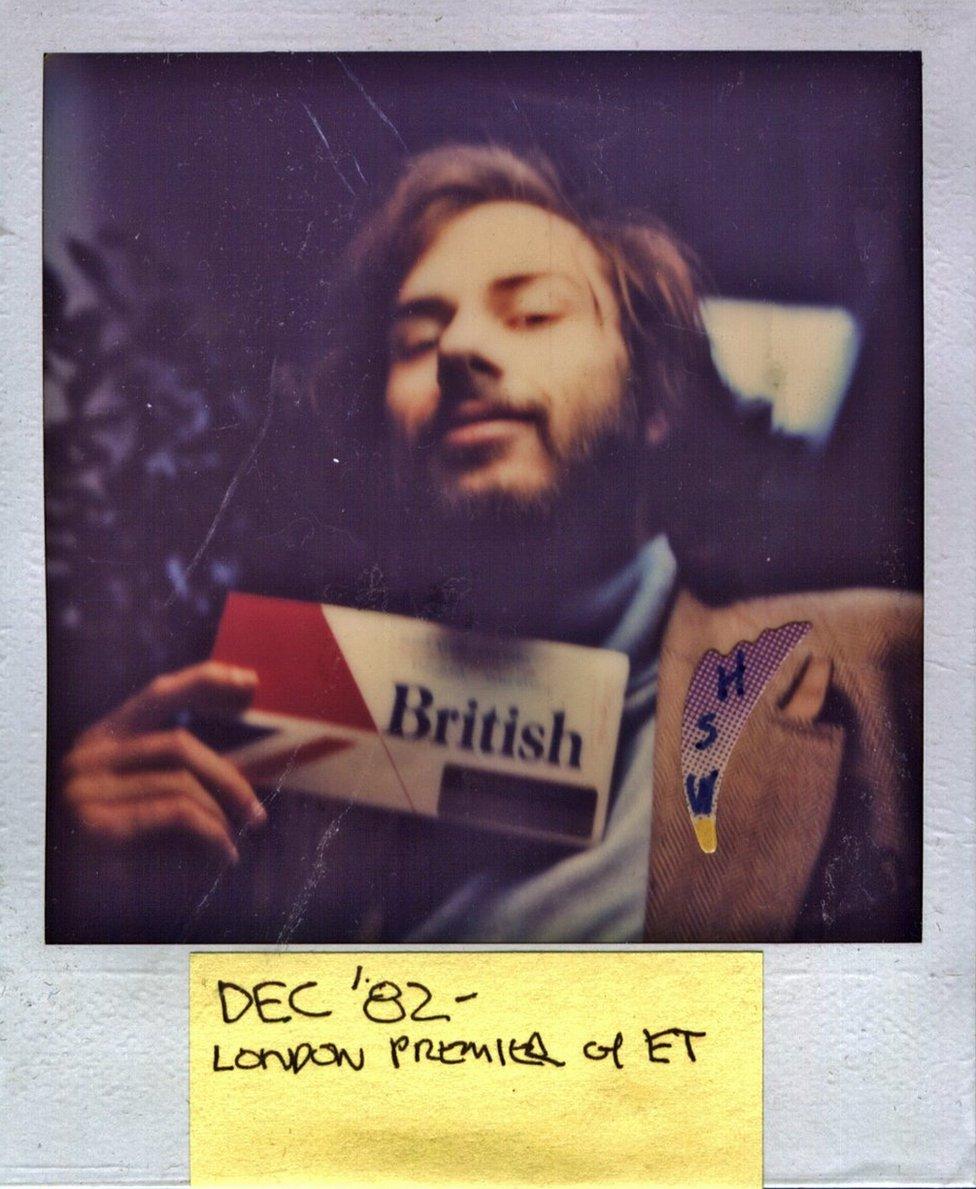
Howard was flown to the London premiere of ET in December 1982

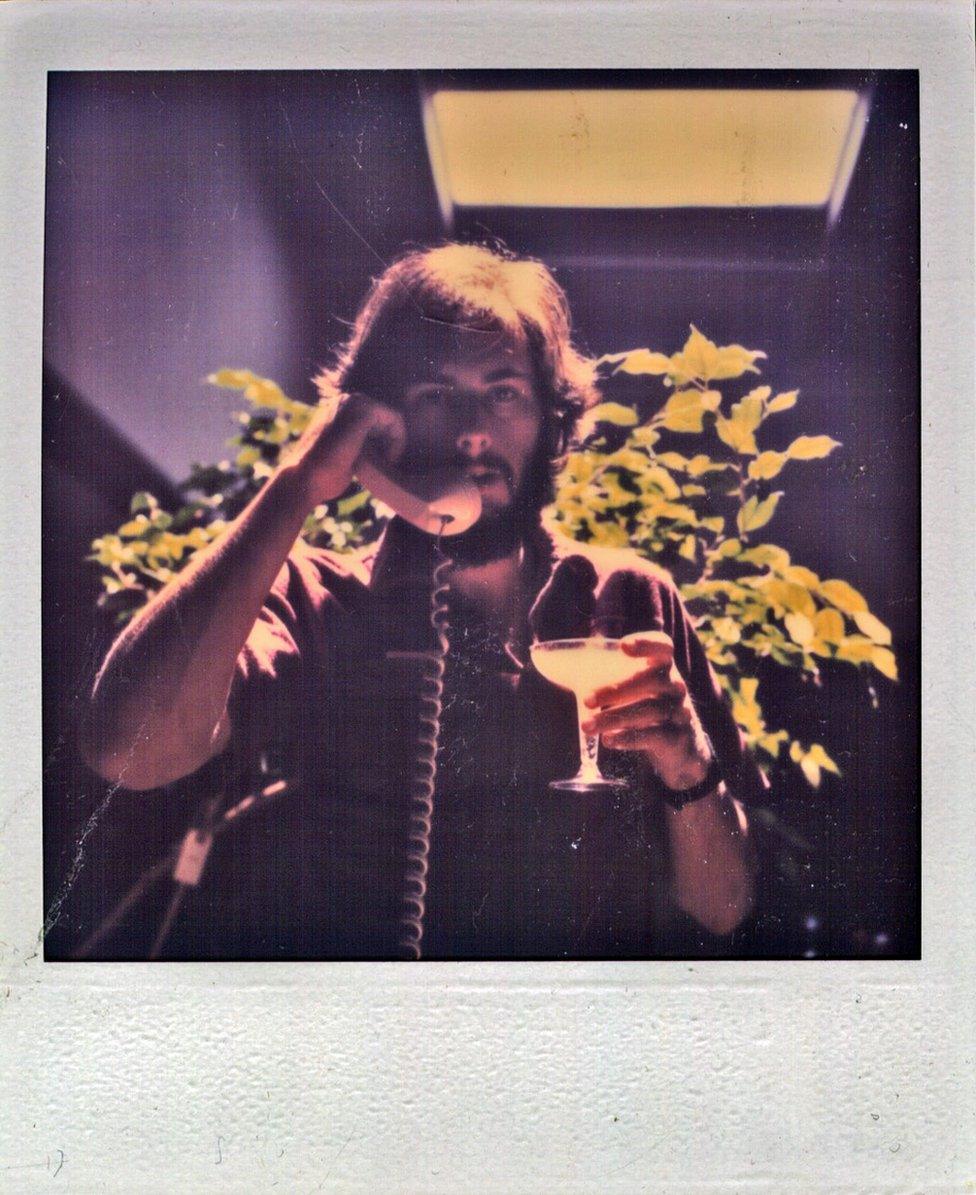
"It was a finished game but it certainly wasn't perfect," Warshaw says. "There were too many opportunities where you could suddenly wind up in an odd situation. That was too much for a lot of people and caused them to put the game down."
Players complained that the ET character would inexplicably fall into pits and get stuck. As one 10-year-old told The New York Times: "It wasn't fun."
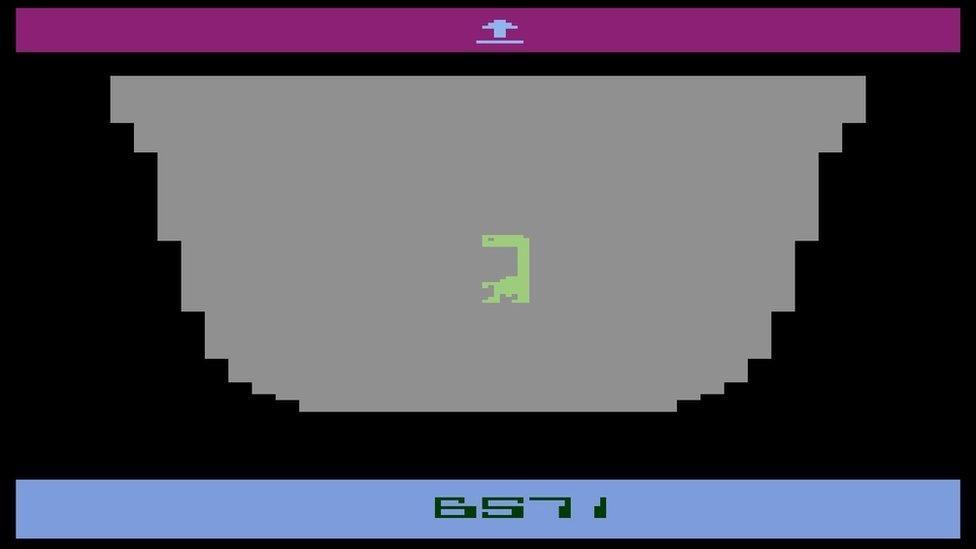
One of the infamous pits that players had trouble avoiding
Atari soon realised that ET was not going home. In early December 1982 it announced "disappointing" sales for the year and the value of its parent company Warner Communications plunged. The results triggered steep drops in the value of other video game makers.
"After the Christmas season it was starting to come back from retailers," says Warshaw. "It still sold nearly 1.5 million units, but when you needed to sell four million, that's not good enough."
By the second quarter of 1983, Atari's parent company announced losses of $310m.
"Things just started to unravel," says Warshaw. "It's awesome to be credited with single-handedly bringing down a billion-dollar industry with eight kilobytes of code. But the truth is a little more complex."

Find out more
Listen to Howard Scott Warshaw on Outlook on the BBC World Service
Outlook tells extraordinary stories from around the world

Consumers were turning to the home computer and the market was saturated with video games. In a bid to avoid collapse, prices - and much of the workforce - were slashed. But it was futile and in July 1984 Warner offloaded Atari for $240m.
"I took some time off to recover from the whole experience," says Warshaw. "I went into real estate for a couple of years and hated it.
"Eventually I went back to technology, returning to video games as a manager and director, but it had lost the charm by then."
Creatively unfulfilled, Warshaw undertook projects in writing and TV production.
"I knew I was done with the industry but I couldn't envision an alternative. I became depressed."
Warshaw's solution was "to throw reason to the wind" and in 2008 he retrained as a psychotherapist.

Despite the ET fiasco, Howard designed some of Atari's best-selling games
"Maybe a part of me really wanted to compensate for all the trauma and depression I created with the ET game," he says. "But in reality it's something I always wanted to do."
Today Warshaw bills himself as The Silicon Valley Therapist, "fluent in both English and nerd". Does he use his own story of colossal failure with clients?
"Sometimes I do," he admits.
"But every therapist uses their own experience with their clients. To me it's a very natural thing. Programmers and therapists are all systems analysts. It's just that I've moved on to a much more sophisticated hardware."
In April 2014 Warshaw was given his own chance to obtain closure on the ET fiasco. A film company was making a documentary about a legend that had persisted for 30 years - that in 1983 Atari had buried truckloads of the unsold ET games in the New Mexico desert.

In April 2014 copies of ET were excavated from a dump in Alamogordo, New Mexico
"I never believed it, I just thought it was absurd," says Warshaw.
The city of Alamogordo granted permission for a public excavation to take place. Warshaw was invited to attend.
"When we arrived, there was a long, long line of fans from all over the country who had travelled to see this," he says. "It was an odd thing to sit there and literally watch your past being dug up."
The excavation confirmed that Atari products were indeed buried at the dump and Warshaw was filmed at the moment a battered and crushed copy of ET was pulled from the ground.
"I became extremely emotional," he says. "This little game that I had written in five weeks more than 30 years ago was still generating excitement. I was full of gratitude.
"Is ET really the worst game of all time? Probably not. But the story of the fall of the video game industry needed a face and that was ET.
"I actually prefer it when people do identify it as the worst game of all time because I also did Yars Revenge and that's frequently identified as one of the best of all time. So between the two, I have the greatest range of any designer in history!"
Subscribe to the BBC News Magazine's email newsletter to get articles sent to your inbox.